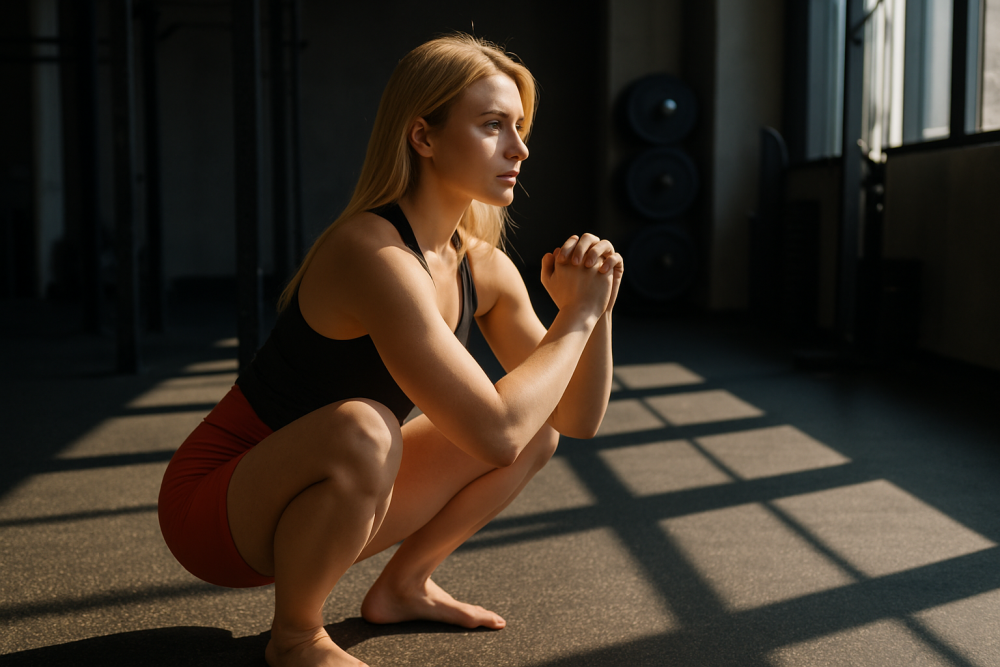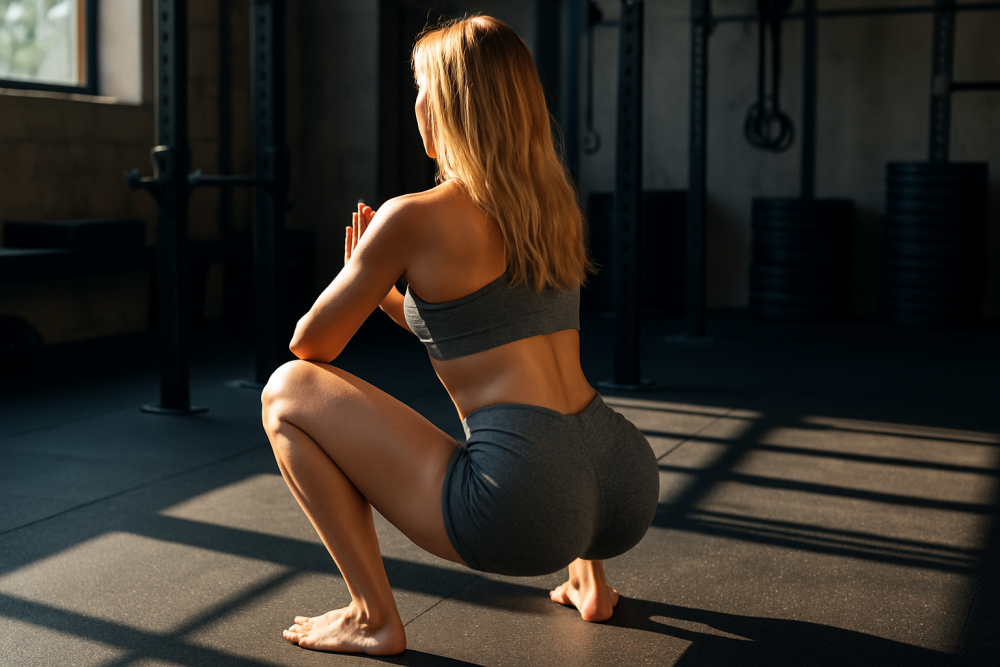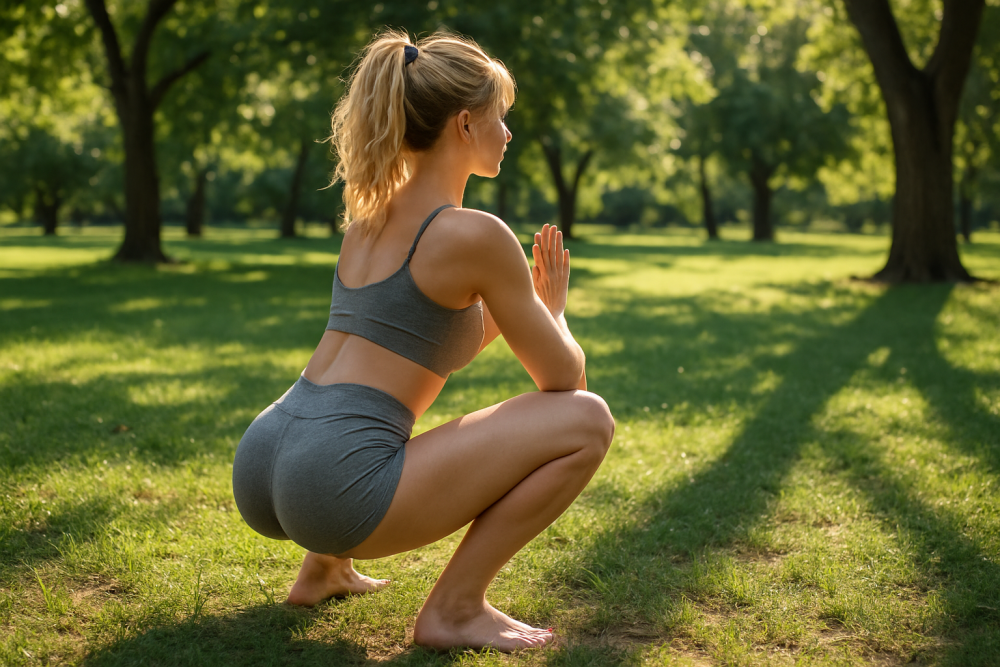Contents
Deep Squat Hold: Benefits, Step-by-Step Guide, Variations, and Tips
Improve Mobility, Flexibility, and Lower Body Strength with This Simple Yet Powerful Stretch
The Deep Squat Hold—also known as the third-world squat or primal squat—is a natural human resting position that doubles as a powerful stretch. This position helps unlock tight hips, ankles, and lower back while building strength and endurance in the lower body. Whether you’re an athlete, martial artist, or someone seeking better mobility, the deep squat hold deserves a spot in your daily routine.

Deep Squat Hold Benefits
The Deep Squat Hold, also known as the “Third World Squat” or “primal squat,” is a powerful bodyweight position that offers a wide range of physical and functional health benefits. Practiced consistently, this simple yet challenging pose can significantly enhance your mobility, strength, and overall well-being—especially if you spend long hours sitting or working at a desk.
- Improves Hip Mobility: One of the standout benefits of the deep squat hold is its ability to open and loosen the hip joints. By lowering into a full squat with your hips below your knees, you activate and stretch tight hip flexors and surrounding muscles. This increased range of motion supports better movement in daily activities, sports, and other exercises.
- Increases Ankle Flexibility: Deep squats demand and develop ankle dorsiflexion—the ability to bend your ankle upwards. Limited ankle mobility is a common issue that can affect walking, running, and squatting mechanics. Holding this position stretches the Achilles tendon and surrounding structures, promoting better lower body function and injury prevention.
- Strengthens Lower Body Muscles: Although it may look passive, the deep squat hold is an isometric strength exercise. Holding the position builds muscular endurance in the quads, hamstrings, glutes, and calves. Over time, this enhances your lower body strength, making it a great addition to both mobility routines and leg workouts.
- Enhances Posture and Spinal Alignment: Sitting deep into a squat helps elongate the spine while encouraging proper alignment from your head down to your pelvis. It also trains your body to maintain balance and control through your core and legs. Practicing the deep squat can reduce the forward tilt of the pelvis and help correct posture imbalances caused by prolonged sitting.
- Boosts Digestion and Pelvic Floor Health: The deep squat naturally compresses and massages the abdominal organs, promoting better digestion and relieving bloating. It also increases blood flow to the pelvic region, which supports pelvic floor health, urinary control, and reproductive function—making it beneficial for both men and women.
Recommended Sets and Duration
Beginners: 2–3 sets of 20–30 seconds
Intermediate: 2–3 sets of 45–60 seconds
Advanced: 2–3 sets of 1–2 minutes or longer
(You can gradually build up over time.)
Practice this stretch daily or at least 3–4 times per week for optimal benefits.

Deep Squat Hold Step-by-Step Guide
- Stand with your feet shoulder-width apart
Toes can point slightly out based on comfort and hip structure. - Lower into a deep squat
Drop your hips down as low as you can while keeping your heels flat on the ground. If your heels lift, widen your stance or elevate the heels slightly with a mat or plate. - Keep your chest lifted and spine neutral
Avoid rounding your upper back. Engage your core for support. - Place your elbows inside your knees
Push your knees out gently using your elbows. Hands can be in a prayer position in front of your chest. - Hold the position
Breathe deeply through your nose and focus on relaxing into the stretch. Keep the weight distributed evenly. - To come up
Push through your heels and engage your glutes as you rise slowly back to standing.

Deep Squat Hold Variations to Explore
- Assisted Deep Squat
Hold onto a door frame, pole, or resistance band for balance while getting used to the depth. - Heels Elevated Squat Hold
Place your heels on weight plates or a rolled towel to counterbalance tight ankles. - Weighted Deep Squat Hold
Hold a light kettlebell or dumbbell (goblet-style) to help stabilize the posture and engage your core. - Rocking Squat Hold
Shift your weight gently side to side to mobilize the hips and ankles more dynamically.

Deep Squat Hold Recommendations and Safety Tips
- Warm up first: A short walk, jumping jacks, or dynamic leg swings help prep the joints.
- Listen to your body: Avoid forcing the squat if you feel knee or lower back pain.
- Breathe deeply: Controlled breathing helps you relax deeper into the stretch.
- Consistency is key: Daily practice can lead to noticeable mobility improvements.
- Use props if needed: Yoga blocks or rolled towels can offer support during early stages.
Final Thoughts
The Deep Squat Hold is more than just a stretch—it’s a return to a fundamental human movement. From improving lower body mobility to aiding digestion, its benefits span far beyond the gym. It’s simple, effective, and requires no equipment—just your body and a few minutes of your time. Incorporate it into your daily routine and watch your flexibility, posture, and comfort in movement improve dramatically.
Follow our Social Media!












